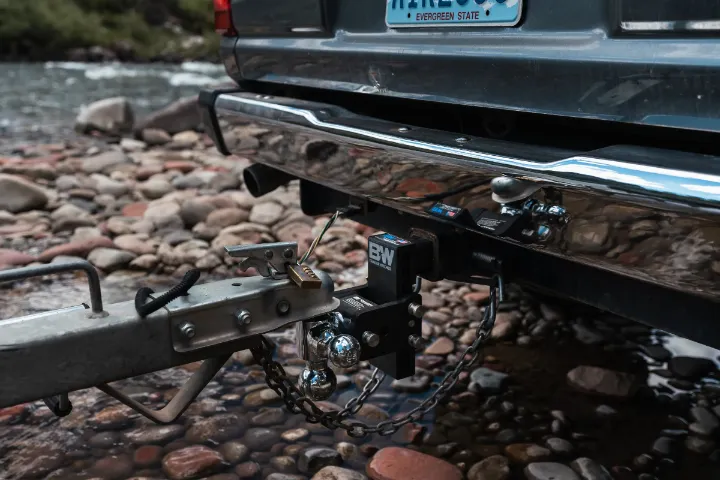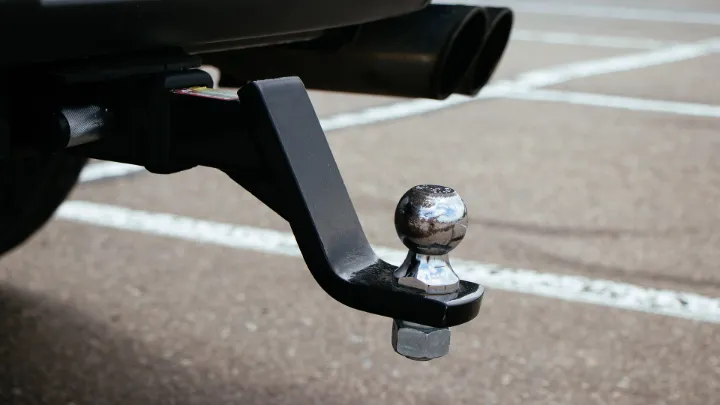You will often use a truck hitch if you need to connect a trailer to your truck for towing. However, there are various types of truck hitches available, and all have different uses and factors that determine how effective they are at their job.
While it can be overwhelming, this article will help explain the different kinds of truck hitches available to you and their advantages and uses.
Hitch Class
Before we go into the various kinds of truck hitches available, we should look at the different hitch classes.

Generally, hitch classes refer to the towing capacity and receiver size. The towing capacity refers to how much weight in the trailer that a hitch can properly support. The receiver size refers to how big the receiver tube is.
Hitch Class for Trucks
Hitch classes range from class 1 to 5, and the load they can carry tends to range from 2000 to 18000 pounds. Generally, trucks use class 4 and 5 hitches. These hitches have a towing capacity of around 10000 to 16000 pounds and a receiver size of 2 inches.
The different types of hitches are all available in different hitch classes, so when choosing your truck hitch, it is important to choose the one with the right hitch class.
Different Types of Truck Hitches
Let us now look at the different types of truck hitches and how they differ.
Rear Receiver Hitch

This is probably the most common truck hitch you’ll see. Rear receiver hitches are mounted on the back of your truck and attached to the frame. You will see this type of hitch in use a lot, as some trucks even have them pre-installed due to their versatility.
- Specifications
Class 5 rear receiver hitches can carry a weight of about 12000 pounds. They can come in both square-shaped receiver tubes or use a ball mounting system.
Generally, square-shaped receiver tubes are more common nowadays, as many components make use of it. The receiver sizes are the standard sizes of 1.5 inches to 2.5 inches.
- Uses
The rear receiver hitch is primarily used for towing and pulling. A trailer or load can be connected via a rear receiver hitch to the truck and then pulled. While it may not seem like much, due to the receiver’s shape and versatility, a lot of different trailers and loads can be towed.
In conjunction with other hitches, you can also tow other vehicles. While the job is singular, the applications are manifold.
Front Mounted Hitch

While rear receiver hitches are connected to the back of a truck, there exists a variant that mounts on the front of the truck. While a lot less common than their rear-mounted counterparts, front-mounted hitches still have a lot of use.
- Specifications
They generally have the same specifications as rear-mounted hitches and come with similar standard receiver sizes. And they mostly all use square-shaped receivers.
- Uses
Contrasting rear-mounted hitches, which are generally used for pulling, and front-mounted hitches are used for pushing. You can connect a trailer to the front of your truck and push said trailer.
Though considering the visual limitations, it is generally recommended to use front-mounted hitches to park your trailer or push it into a particular area.
However, front-mounted hitches aren’t just restricted to pushing loads and trailers. They can be used to attach a snowplow to the front of your truck to help you clear the snow on the road during a particularly heavy snowstorm. You can also mount a spare tire using it if you lack space in the back.
Bumper Mounted Hitch

The previous two hitches worked by attaching them to the frame of your truck. Bumper-mounted hitches are a bit different in that they are attached to the bumper of your truck. This allows them to be attached to both the front and rear of a truck.
- Specifications
Since these types of hitches are connected to the bumper and not the frame, this limits the amount of load they can carry or support as the bumper is more susceptible to stress. They also use square-shaped receivers.
- Uses
Bumper-mounted hitches are primarily used for lighter loads and should not be used for heavier ones as they can damage the bumper. A cargo trailer is a good option to use with it.
Fifth Wheel Hitch

The fifth wheel hitch is a little different compared to all the previous types of truck hitches in design. This hitch doesn’t mount on either the frame or the bumper but instead mounts on the truck bed.
While other hitches have their coupling devices on their trailers, the fifth wheel hitches instead feature said device on the hitch itself.
These hitches are only usable with pickup trucks, though, since they need a wide bed to attach themselves to.
- Specifications
Fifth wheel hitches can generally carry much greater loads and cap up to 24000 pounds. Due to their unique locking mechanism, they tend to only work with trailers.
- Uses
They are generally used for carrying heavy loads that other types of hitches aren’t strong enough for. It should also be noted that fifth-wheel hitches have a pivot capability allowing them to absorb shocks on the road. This makes them the go-to option for offside roads and mountain tracks.
Gooseneck Hitch

The gooseneck hitch is similar to the fifth wheel hitch in its design and function. Like the previous one, they also work only on pickup trucks and with gooseneck trailers.
- Specifications
The gooseneck hitch occupies less space than the fifth wheel hitch and can carry loads of about 28000 pounds, making them more heavy-duty than fifth wheel hitches.
- Uses
They are generally used for heavy-duty work and pulling larger trailers or car beds due to their high capacity. And they also have similar pivoting capabilities making them usable for off-road drives.
Pintle Hitch

The pintle hitch contrasts all the previous hitches in design since it consists of two parts. And the pintle is the hook part of the hitch. The other part is a ring that can be attached to the trailer. This ring is known as the lunette.
- Specifications
Pintle hitches are incredibly strong and can carry loads that weigh up from 40000 to 50000 pounds. The pintle or the hook part of the hitch can be connected directly to the frame of your truck, or you can also opt to make use of a receiver hitch for a stronger connection.
- Uses
Despite the incredible capacity of pintle hitches, they aren’t used as much. They aren’t used when driving since they create a lot of noise and don’t have a great pivoting capability like the fifth-wheel hitch. And they are used in construction and agricultural fields.
Weight Distribution Hitch
This type of hitch features two long rods that serve to reduce the downward force exerted by the trailer. They are connected to the rear hitch of a truck.
- Specifications
They come in standard receiver sizes and often have a towing capacity of 15000 pounds.
- Uses
They are generally used to ensure a safer ride. The even distribution of weight ensures better control and steering.
Conclusion
We hope that this article has helped you feel less overwhelmed by the different types of truck hitches available.
Once you’ve identified what you need the hitch for, you’ll have an easier time deciding on which truck hitch to use. Make sure to test it out before committing to a purchase.
